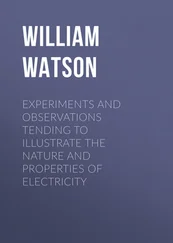Mark Changizi - Harnessed - How Language and Music Mimicked Nature and Transformed Ape to Man
Здесь есть возможность читать онлайн «Mark Changizi - Harnessed - How Language and Music Mimicked Nature and Transformed Ape to Man» весь текст электронной книги совершенно бесплатно (целиком полную версию без сокращений). В некоторых случаях можно слушать аудио, скачать через торрент в формате fb2 и присутствует краткое содержание. Год выпуска: 2011, Издательство: Perseus Books Group, Жанр: Старинная литература, на английском языке. Описание произведения, (предисловие) а так же отзывы посетителей доступны на портале библиотеки ЛибКат.
- Название:Harnessed: How Language and Music Mimicked Nature and Transformed Ape to Man
- Автор:
- Издательство:Perseus Books Group
- Жанр:
- Год:2011
- ISBN:нет данных
- Рейтинг книги:5 / 5. Голосов: 1
-
Избранное:Добавить в избранное
- Отзывы:
-
Ваша оценка:
- 100
- 1
- 2
- 3
- 4
- 5
Harnessed: How Language and Music Mimicked Nature and Transformed Ape to Man: краткое содержание, описание и аннотация
Предлагаем к чтению аннотацию, описание, краткое содержание или предисловие (зависит от того, что написал сам автор книги «Harnessed: How Language and Music Mimicked Nature and Transformed Ape to Man»). Если вы не нашли необходимую информацию о книге — напишите в комментариях, мы постараемся отыскать её.
Harnessed: How Language and Music Mimicked Nature and Transformed Ape to Man — читать онлайн бесплатно полную книгу (весь текст) целиком
Ниже представлен текст книги, разбитый по страницам. Система сохранения места последней прочитанной страницы, позволяет с удобством читать онлайн бесплатно книгу «Harnessed: How Language and Music Mimicked Nature and Transformed Ape to Man», без необходимости каждый раз заново искать на чём Вы остановились. Поставьте закладку, и сможете в любой момент перейти на страницу, на которой закончили чтение.
Интервал:
Закладка:
It’s easy to see why three-year-old aggressive and streaking behaviors would prompt a well-timed response in others (especially parents). Another common category of human behavior that elicits a behavioral response in others, in fact one of the most common, is expressive behavior. Human expressions are for other humans to see or hear or smell, precisely in order to prompt them to modulate their behavior. Sometimes another person’s response may be a complex whole-body behavior (I give my wife my come-hither look, she responds by going thither), and sometimes the other person’s behavioral response may simply be an expression of emotion (I grimace and rub my newly minted bruise, and my son responds by smiling). If music is good at getting us to move, then, in this light, one suspects that music must usually sound not merely like movement that kicks (literally, in my son’s case) listeners into moving in response, but, more specifically, like human emotional or expressive behaviors.
Sound triggering movement. That’s starting to sound a bit like dance. To more fully understand dance, we must grasp one further thing: contagious behaviors—behavioral expressions that tend to spread. For example, if I smile, you may smile back; and if I scowl, you’ll likely scowl back. Even yawns are catching. And contagious behavior is not confined to the face. Nervous behavior can spread, and angry bodily stances are likely to be reciprocated. If you raise your hands high into the air, a typical toddler will also do so, at which point you have a clear tickle shot. Even complex whole-body behaviors are contagious, accounting for why, for example, people in a crowd often remain passive bystanders when someone is being attacked (other people’s inaction spreads), and how a group of people can become a riotous mob (other people’s violent behavior spreads). By the way, have you yawned yet?
Music, then, may elicit movement for the same reasons that a cartoon smiley face can elicit smiles in us: music can often sound like contagious expressive human behavior and movement, and trigger a similar expressive movement in us. Music may not be marching orders from our commander, but it can sometimes cue our emotional system so precisely that we feel almost compelled to march in lockstep with music’s fictional mover. And this is true whether we are adults or toddlers. When music is effective at getting us to mimic the movement it mimics, we call it dance music, be it a Strauss waltz or a Grateful Dead flail.
The music-sounds-like-movement theory can, then, explain why music provokes us to dance—the third of the four hurdles a theory of music must leap over. The fourth and final hurdle concerns the structure of music, and it will take the upcoming chapter and the Encore chapter to make the case that music has the signature structure of humans moving.
Don’t Roll Over, Beethoven
The case for my theory is strong, I believe, and I hope to convince you that music sounds like human movement. If I am correct, then, with the movement-meaning of music in hand, we will be in a position to create a new generation of “supermusic”: music deliberately designed to be even more aesthetically pleasing, by far, than previous generations of music. Music has historically been “trying” to shape itself like expressive human behaviors, in the sense that that was what was culturally selected for. But individual composers didn’t know what music was trying to be—composers didn’t know that music works best when tapping into our human-movement auditory mechanisms. Musical works have heretofore tended to be sloppy mimickers of human movement. With music decoded, however, we can tune it perfectly for our mental software, and blow our minds. You’re toast, Beethoven! I’ve unraveled your secrets!
No. Just kidding. I’m afraid that the music research I’m describing to you will do no such thing, even if every last claim I make is true. To see why the magic of Beethoven is not unraveled by my theory, consider photographic art. Some photographs have evocative power; they count as art. Some photographs, however, are just photographs, and not art. What exactly distinguishes the art from the “not” is a genuine mystery, and certainly beyond me. But there is something that is obviously true about art photographs: they are photographs . Although that’s obvious to us, imagine for a moment that four-dimensional aliens stumble upon a pile of human artifacts, and that in the pile are photographs. Being four-dimensional creatures, they have poor intuitions about what a three-dimensional world looks like from a particular viewpoint inside it. Consequently, our human photographs are difficult to distinguish from the many other human artifacts that are flat with stuff printed upon them, such as wallpaper, clothing, and money. If they are to realize that the photographs are, in fact, photographs—two-dimensional representations of our 3-D world—they are going to have to discover this.
Luckily for them, one alien scientist who has been snooping around these artifacts has an idea. “What if,” he hypothesizes, “some of the flat pieces of paper with visual marks are photographs? Not of our 4-D world, but of their human 3-D world?” In an effort to test this idea, he works out what the signature properties of photographs of 3-D worlds would be, such as horizons, vanishing points, projective geometry, field of focus, partial occlusion, and so on. Then he searches among the human artifacts for pieces of paper or fabric having these properties. He can now easily conclude that wallpaper, clothing, and money are not photographs. And when he finds some of our human photographs, he’ll be able to establish that they are photographs, and convince his colleagues. This alien’s research would amount to a big step forward for those aliens interested in understanding our world and how we perceive it. A certain class of flat artifacts is meaningful in a way they had not realized, and now they can begin to look at our photographs in this new light, and see our 3-D world represented in them.
The theory of music I am defending here is akin to the alien’s theory that some of those flat artifacts are views of 3-D scenes. To us, photographs are obviously of 3-D scenes; but to the aliens this is not at all obvious. And, similarly, to our auditory system, music quite obviously is about human action; but to our conscious selves this is not in the least obvious (our conscious selves are aliens to music’s deeper meaning).
To see why this book cannot answer what is good music, consider what this alien scientist’s discovery about photographs would not have revealed. Unbeknownst to the alien, some of the photographs are considered by us humans to be genuine instances of art, and the rest of the photographs are simply photographs. This alien’s technique for distinguishing photographs from nonphotographs is no use at all for distinguishing the artful photographs from the mere photographs. Humanity’s greatest pieces of photographic art and the most haphazard kitsch would all be in the same bag, labeled “views of a 3-D world.” By analogy, the most expressive human movement sounds and the most run-of-the-mill human movement sounds are all treated the same by the ideas I describe in this book; they are all in the same bag, labeled “human movement sounds.” Although it is expressive human movements that probably drive the structure of music, I have enough on my hands just trying to make the beginnings of a case that music sounds like human movement. Just as it is easier for the four-dimensional alien to provide evidence for photograph-ness than to provide evidence for artsy-photograph-ness, it is much easier for me to provide evidence that music is human-movement-ish than to provide evidence that it is expressive-human-movement-ish. Photographic art is views of 3-D scenes, but views of 3-D scenes need not be photographic art. Similarly, music is made of the sounds of humans moving, but the sounds of humans moving need not be—and usually are not—music.
Читать дальшеИнтервал:
Закладка:
Похожие книги на «Harnessed: How Language and Music Mimicked Nature and Transformed Ape to Man»
Представляем Вашему вниманию похожие книги на «Harnessed: How Language and Music Mimicked Nature and Transformed Ape to Man» списком для выбора. Мы отобрали схожую по названию и смыслу литературу в надежде предоставить читателям больше вариантов отыскать новые, интересные, ещё непрочитанные произведения.
Обсуждение, отзывы о книге «Harnessed: How Language and Music Mimicked Nature and Transformed Ape to Man» и просто собственные мнения читателей. Оставьте ваши комментарии, напишите, что Вы думаете о произведении, его смысле или главных героях. Укажите что конкретно понравилось, а что нет, и почему Вы так считаете.












